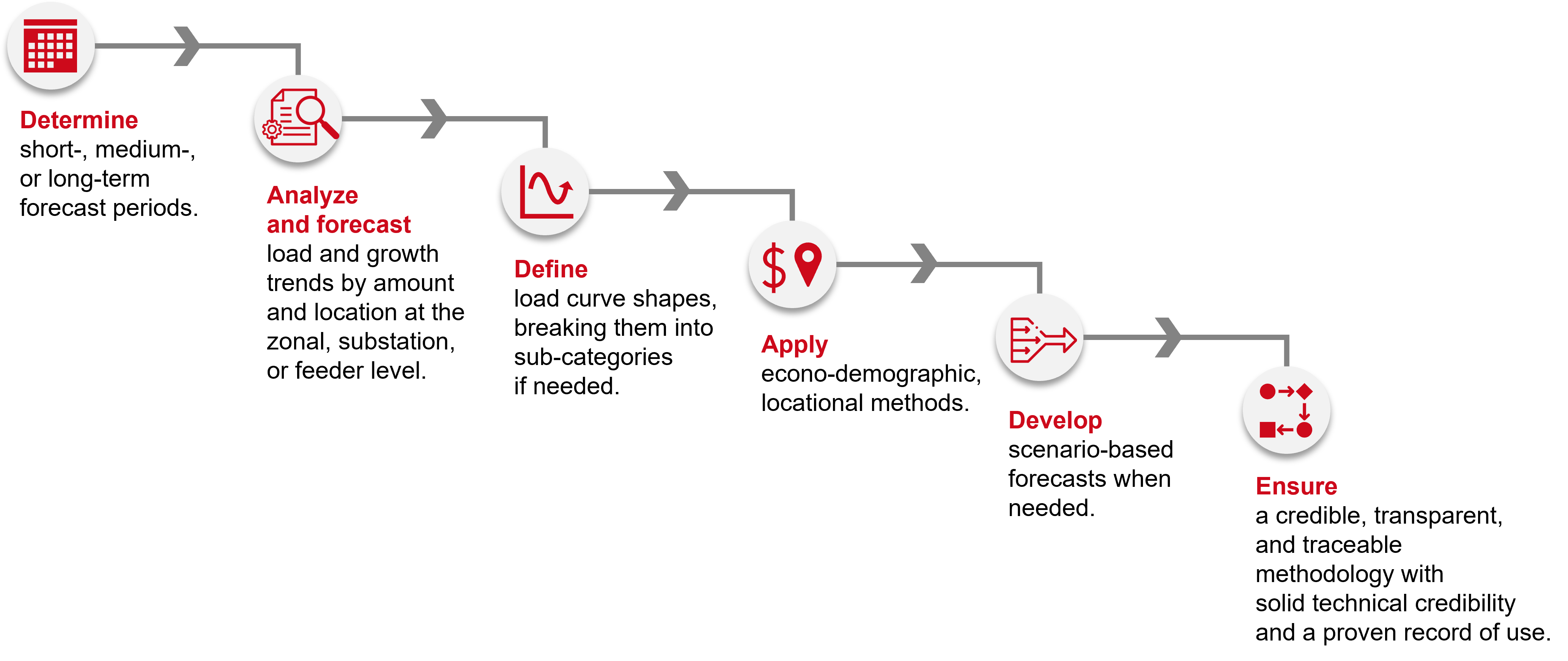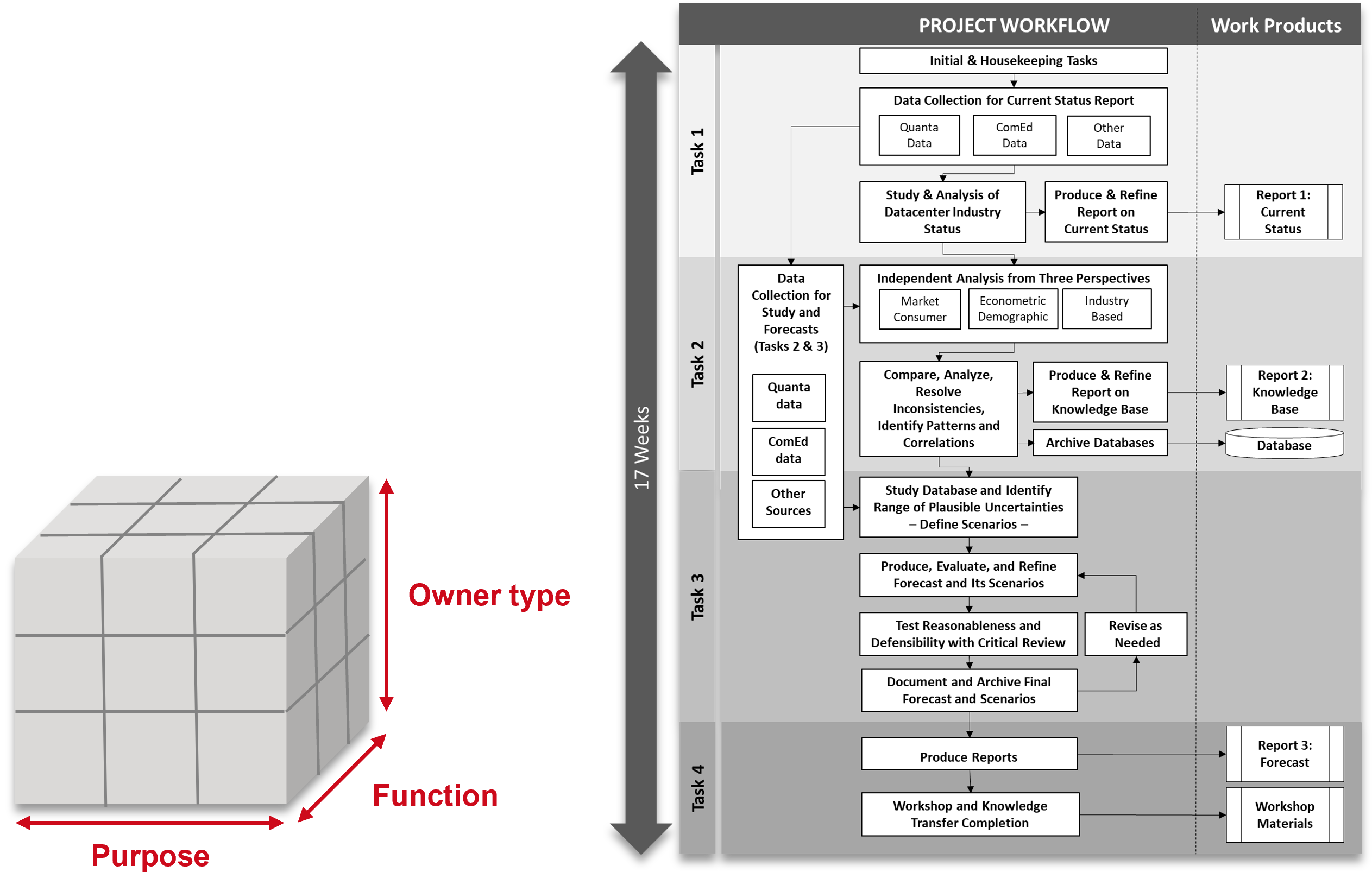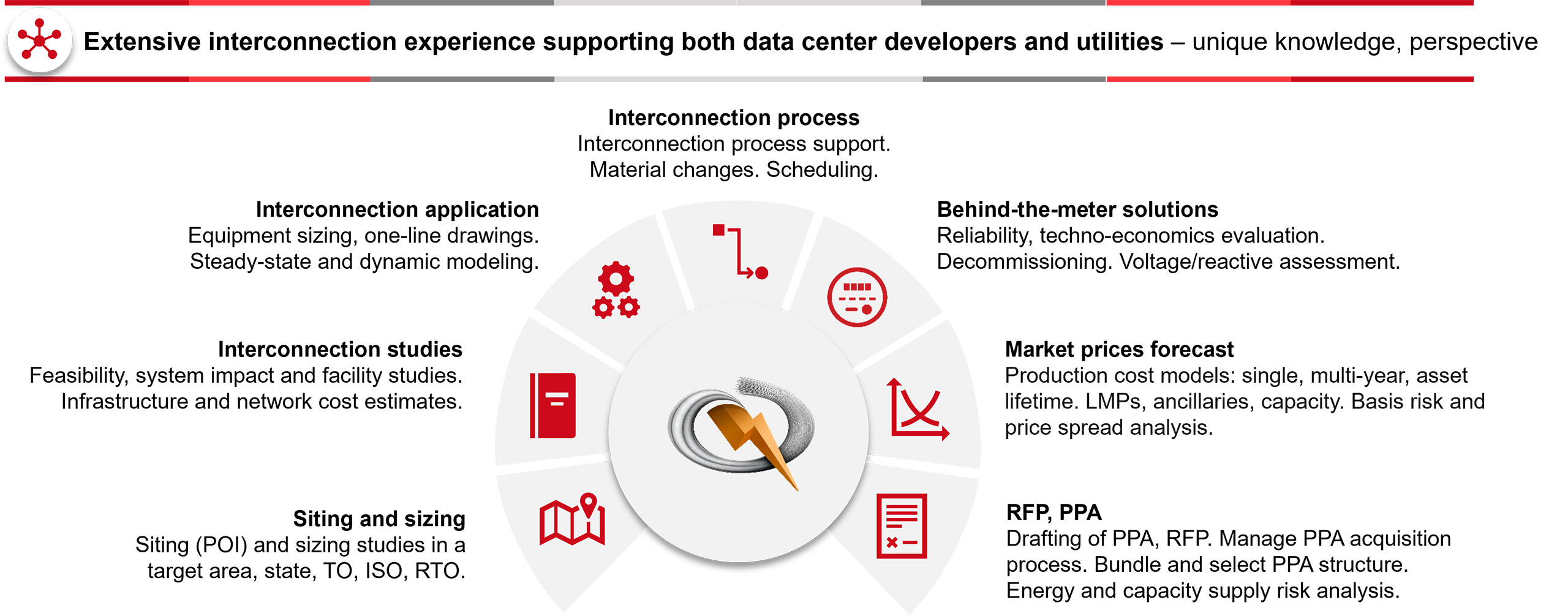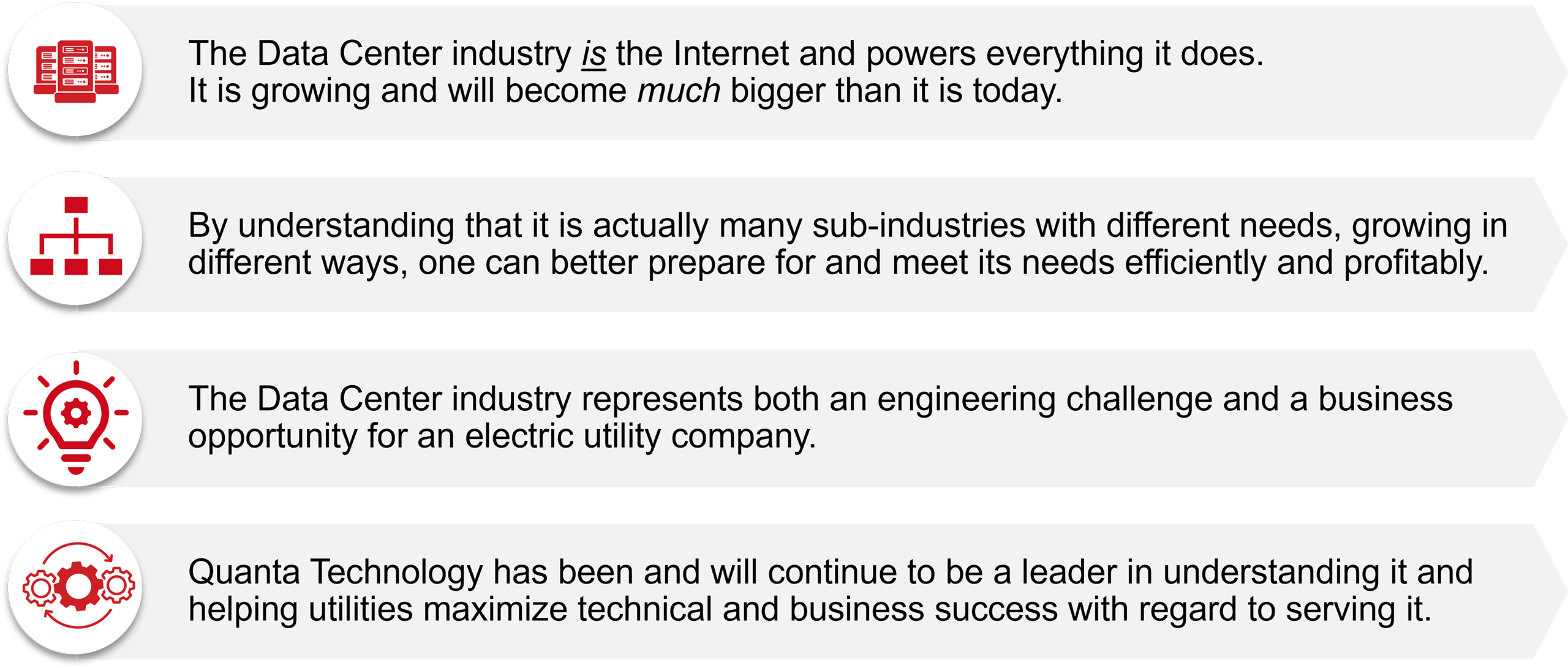Data centers are a rapidly expanding industry with enormous and growing energy needs. Modern data centers often require over 100 MW of power, and larger facilities can exceed 1,000 MW, placing unprecedented demand on reliable energy delivery. As more data centers are established, they face significant challenges with siting and interconnection. Meanwhile, utility providers must balance the pressure to support new, economically beneficial loads against the risks of stranded assets.
Quanta Technology collaborates closely with utility providers and data center clients to address these challenges. With over 20 years of experience, we bring a breadth of expertise, offering end-to-end support from initial studies—such as load forecasting, siting, and interconnection planning—to the practical application of technologies through assessments, testing, engineering, and operations. Our services also include market forecasting, energy RFP/PPA services, and real-time energy monitoring, providing data centers with the tools to optimize energy use and reliability.
Data Center Load Forecasting


Data Center Modeling in Load Forecasts
We use a multi-factor approach based on three basic dimensions to track and model 15 slightly- to very-different data center business models.
- Purpose/market served.
- Function and design.
- Type of owner/business model

Siting and Interconnections


Project Examples:
National Data Center Impact Study:
Objective: Evaluate the impact of data center growth on nationwide power systems.
Approach: Develop updated power flow models to be used in analysis that will quantify the impact of data center interconnections. Analyze the majority of U.S. power system, including PJM, SERC, MISO ,SPP, WECC, and ERCOT.
Result: Produce heatmap representations for each geography depicting interconnection load capacity and high-level estimates for network upgrade costs by latitude and longitude coordinates.
Prospecting Metro Areas for Development:
Objective: Identify the best points of interconnection for large data center loads in a specific metropolitan area.
Approach: Use utility interconnection models and public interconnection queue data to assess available load serving capacity by transmission substation.
Result: Produce regional heatmap depicting available load serving capacity and interconnection costs.
Technology Assessment, Testing, Design, and Implementation


Project Examples:
Testing redundant 480 V sources and feeders serving data center loads
- Objective: Confirm performance of control and protection hardware prior to field deployment.
- Approach: Utilize RTDS HIL testing to verify performance of controls for a 480 V 4-wire model with redundant sources for the following: automatic load balancing and load transfer, closed/open transitions to an alternate source, IEC 61850 communication and SCADA system, load shedding and prioritized restoration.
Technology assessment analyzing technologies to improve efficiency, reliability, security, and scalability
- Objective: Assess costs and risks of conventional equipment (circuit breakers, switchgear and transformers) and new technologies (energy storage, photovoltaic, power conversion systems) for various OEM suppliers.
- Approach: For each equipment type, evaluate multiple OEMs across seven categories.
- Outcome: Radar chart each type of equipment comparing supplier evaluations across the seven evaluation categories.


